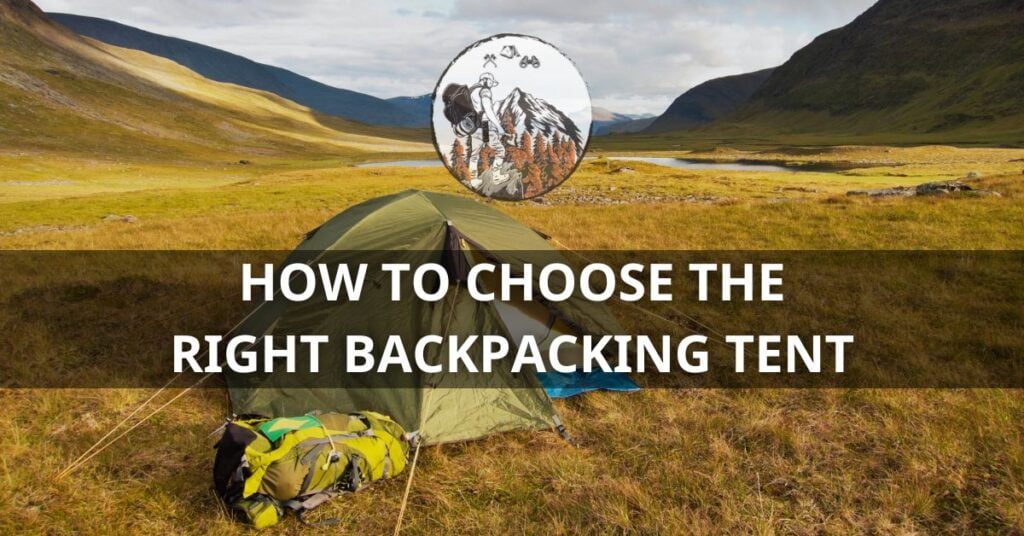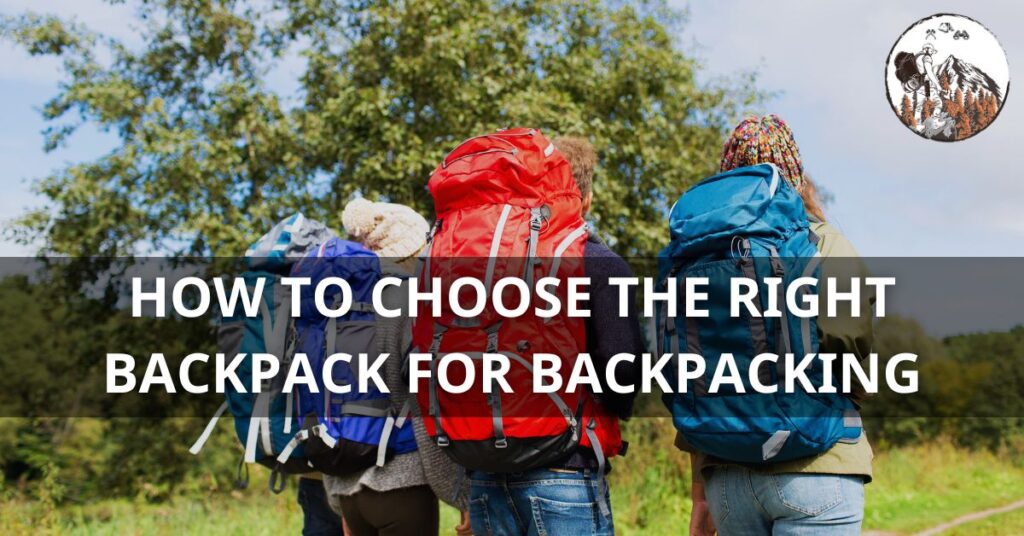Embarking on a backpacking adventure with your furry friend can be an incredibly rewarding experience, allowing you both to explore the great outdoors together. However, just like any outdoor excursion, proper preparation is key to ensuring a safe and enjoyable journey for you and your canine companion. That’s where our comprehensive “Dog Backpacking Checklist” comes into play.
In this informative guide, we’ll walk you through all the essential items you need to pack to keep your dog safe, comfortable, and happy during your backpacking trip. Whether you’re a seasoned backpacker or new to the experience, our checklist will help you cover all the bases, from food and water to safety gear and first aid supplies.
Planning for Dog Backpacking
Choosing the Right Trail
Selecting a trail conducive to dog backpacking is crucial. Look for destinations with moderate terrain and well-defined paths, especially for a starter hike. The trail should also allow dogs and cater to their specific needs, such as access to water sources at regular intervals.
Seasonal Considerations and Weather Precautions
Check weather forecasts and pack accordingly. Extra precautions like reflective gear during hunting seasons can be life-saving.
Checking Regulations and Permits
Different trails have different rules regarding dogs. Before you set out, ensure you know trail regulations, leash laws, and any required permits or documentation for your pet.
Let’s check the Dog Backpacking Checklist
Table of Contents

Choosing the Right Backpack for Your Dog
Backpacks for Dogs
Not all dog backpacks are created equal. The right backpack should be sturdy, adjustable, comfortable for your dog, and well-ventilated to prevent overheating.
- Dog Backpack: Ensure it fits your dog comfortably and has proper weight distribution.
- Dog Backpack Saddlebags: “Need more space to carry your extra gear or supplies? We’ve got you covered with additional storage options that are the saddlebags for dogs.”
- Doggy Backpack Rain Cover: To keep your dog’s belongings dry during rainy weather, it’s important to take steps to protect them. It’s considered optional gear and it’s totally up to your choice and preferences.
Size and Fit Guidelines
The first step is selecting a pack that suits your dog’s size and build. Ill-fitting packs can cause discomfort and chafing. Ensure there’s room for essentials but never overload your pup.
Durability and Weather Resistance
Invest in packs made of durable, weather-resistant materials. Your choice of the pack should be tailored to the most extreme conditions you expect to encounter.
Comfort Features for Your Dog
To guarantee a pleasant experience, look for comfort features such as padded straps, breathable fabrics, and adjustable load distribution. Your dog should be able to move freely and comfortably, especially over long distances.

Packing Essentials for Your Dog
Food and Water Supplies
- Hydration is Key: Always carry ample water for both you and your dog, along with collapsible bowls for easy storage and accessibility. Consider the trail’s water sources and whether they are safe and plentiful.
- Nutrition on the Trail: Pack high-energy dog food and treats to keep your furry friend fueled. It’s important to bring more food than usual since your dog will be burning extra calories.
Plan for a supply of food that is high in energy to fuel your dog’s exertion. Portable collapsible bowls are ideal for on-the-go hydration.
Shelter and Sleeping Gear
- Protective Shelter: Even if you plan to sleep under the stars with your dog, a lightweight, compact dog tent or a special canine bivy bag can provide necessary protection from the elements. This is especially important in unpredictable weather conditions.
- Insulating Sleeping Pad: To keep your dog warm and comfortable during the night, invest in an insulating, cushioned sleeping pad. Look for one that is durable and can act as a barrier between your dog and the cold ground.
- Warm Sleeping Bag: For colder climates, a dog-specific sleeping bag can provide additional warmth and comfort. Some are designed to be lightweight and packable, making them perfect for backpacking.
- Extra Blankets: Always pack one or two lightweight, compact blankets for additional warmth. These can be especially useful during rest stops or unexpected temperature drops.
- Portable Dog Bed: If your dog is accustomed to sleeping on a bed, consider a portable, lightweight dog bed that can easily be attached to your backpack.
A lightweight dog tent or appropriate tarp will give your pup a safe, dry resting place. Don’t forget an insulated sleeping pad for chilly nights.
First Aid Kit and Medications
No backpacking checklist is complete without a well-stocked first-aid kit and necessary medications for your dog. This kit ensures you are prepared for any minor injuries or health issues that might arise on the trail.
First Aid Kit: Your canine first aid kit should include items tailored to your dog’s needs and the specifics of your adventure. Essential items include:
- Gauze pads and adhesive tape for cuts or wounds
- Tweezers for tick removal
- Antiseptic wipes to clean wounds
- Scissors to cut hair or bandage material
- A blanket or thermal foil for retaining body warmth
- A tick removal tool
- A compact guidebook on pet first aid
Medications: Don’t forget any daily or emergency medications your dog might require. This includes:
- Prescription medications with clear dosage instructions
- Flea and tick prevention treatments
- Allergy medications if necessary
- Pain relievers approved by your veterinarian for emergency use
Vet Records and Contacts: Always carry a copy of your dog’s vaccination records and a list of emergency contacts, including a nearby vet on the trail.
Just like humans, dogs can suffer injuries and illnesses on the trail. Be prepared with a canine-specific first aid kit and any required medications.

Navigation and Safety Gear
Leashes, Collars, and Harnesses
- Adjustable Leashes: A durable, adjustable leash allows for varying levels of control and freedom, essential for navigating the unpredictability of outdoor trails. Opt for one that can easily switch between a short lead for crowded or treacherous segments and a longer line for open spaces where your dog can safely explore.
- High-Visibility Collars: Enhance your dog’s visibility to others, especially in areas with potential vehicle traffic or during dusk and dawn hikes. Collars equipped with reflective material or LED lights ensure your dog is seen, safeguarding against accidents.
- Comfortable Harnesses: A well-fitting harness distributes the load more evenly across your dog’s body, offering better control and reducing strain on their neck. Look for harnesses with padded straps to prevent chafing, especially crucial for long hikes.
- ID Tags and Microchips: An up-to-date ID tag attached to your dog’s collar is a basic yet vital safety measure. Additionally, ensure your dog is microchipped, and the registration is current—this can be a lifesaver if your dog gets lost.
- Waterproof and Durable Materials: Choose leashes, collars, and harnesses made from waterproof and durable materials to withstand harsh weather and terrain. This ensures the safety gear remains functional and secure, no matter the environment.
- Emergency Release Mechanisms: In case of entanglement or another emergency, a collar or harness with a quick-release mechanism allows for rapid detachment. This feature can prevent injury or worse in critical situations.
- Navigation Tools and Maps: While your dog’s keen sense of direction is an asset, you should always have a trail map and compass. GPS collars are an increasingly popular high-tech alternative.
Well-fitted harnesses and leashes aren’t just about control—they ensure your dog is safe and secure in varied terrain. Reflective or light-up collars are essential if you plan on hiking in low-light conditions.

Clothing and Protection
Apparel for Different Weather Conditions
When planning your backpacking trip with your dog, consider the range of weather conditions you may encounter and pack appropriate apparel for your furry friend. This can include:
- Protective Rain Gear: A waterproof dog coat is indispensable for keeping your dog dry during rain showers. Look for jackets that are breathable yet offer full coverage to prevent your dog from getting cold and wet.
- Insulated Coats: For cold weather adventures, an insulated coat is essential to keep your dog warm. These coats should be snug, without restricting movement, and preferably have a waterproof outer layer.
- Cooling Vests: In contrast, for hikes in hot climates, cooling vests can help prevent overheating. These vests work by evaporation and need to be soaked in water to activate the cooling effect.
- Paw Protection: Don’t forget about your dog’s feet! Protective booties can safeguard paws from hot surfaces, sharp rocks, and snow. Ensure they fit properly to avoid discomfort or loss during the hike.
- Sun Protection Gear: In areas with strong sun exposure, consider apparel that offers UV protection to prevent sunburn, especially for dogs with short or light-colored fur.
Appropriate apparel ensures your dog’s comfort and safety, allowing you both to fully enjoy your outdoor adventure, regardless of the weather conditions. A rugged, lightweight jacket can protect from the elements. In extreme heat, a cooling vest can help regulate body temperature.
Training and Conditioning
Preparing Your Dog for Backpacking
Getting your dog accustomed to wearing its pack is key. Gradual introduction is essential to preventing aversion.
Conditioning Exercises and Fitness Routines
Increase your dog’s stamina with regular walks and hikes. Practice off-trail walking to familiarize them with varied terrains.
Behavioral Training and Commands
Solid obedience commands and behavioral training make for a smooth, safe adventure. Start early if these are not already part of your dog’s skill set.

Meal Planning and Nutrition
Nutritional Needs for Active Dogs
Your dog will need a nutrient-dense diet. Consult your vet on the best meal plan for your dog based on its breed, age, and health.
Packing Lightweight and Nutritious Meals
Dehydrate or portion meals for easy packing. There are even dog-specific camping meals available.
Hydration Strategies on the Trail
Ensure access to water at all times. Portable filters can help you both stay hydrated without weighing down your pack.
Packing Tips for Efficiency
Distributing Weight Properly
Load the backpack with the heaviest items closest to your dog’s body. This placement prevents the pack from pulling or shifting and maintains your dog’s work balance.
Minimizing Pack Weight
Bring only what’s necessary. Aim for lightweight options when it comes to gear, and consider the weight of the pack itself in your dog’s total load.
Organizing Essential Items
Keep essentials like first aid kits and food near the top and easily accessible. Regularly review your pack’s content to ensure you’re only carrying what’s needed.
Seasonal Considerations
Dog Backpacking in Different Seasons
Adjust your preparations according to the season. Summers require extra water and protection from the sun, while winters demand insulation and potential snow gear.
Gear Adjustments for Winter/Summer Trips
Invest in weather-appropriate gear for extreme seasons like insulated water bottles or boots for summer heat and cold-weather jackets for winter jaunts.
Weather Monitoring and Preparedness
Stay updated on weather forecasts before and during the trip. Be ready to adjust plans in the face of extreme conditions to ensure the safety of you and your dog.
Safety Measures on the Trail
Understanding Trail Hazards
Be aware of potential dangers on the trail such as steep drops, water crossings, and inclement weather. Plan your route to avoid these hazards, especially if your dog is still learning.
Identifying Poisonous Plants
Recognize and steer clear of poisonous plants. Teach your dog to avoid these plants and be prepared to administer first aid should accidental contact occur.
Handling Encounters with Wildlife
Prepare for wildlife encounters and know how to react. Depending on the species, this might involve leashing your dog, making noise to alert animals, or retreating calmly from the area.
After the Backpacking Trip
Grooming and Hygiene
Maintain your dog’s hygiene, by cleaning paws, ears, and coats to remove dirt, debris, and potential irritants. This also offers a chance to check for ticks or other parasites.
Gear Maintenance and Cleaning Tips
Properly clean and store all gear. This ensures a longer lifespan for your equipment and keeps your dog’s items in top condition for the next trip.
Conclusion
Dog backpacking is an immersive, rewarding adventure that can strengthen the bond between you and your pet. It requires preparation, awareness of safety considerations, and a commitment to truly experiencing nature together.
By following the tips outlined in this article and utilizing the comprehensive Dog Backpacking Checklist, you can embark on your journey with confidence, knowing you have everything you need to keep both you and your dog safe, comfortable, and happy along the trail.
Remember, with every trip, you’ll both gain experience and knowledge, ensuring even more incredible journeys in the future. So, pack your bags, leash up your pup, and get ready for an unforgettable outdoor experience together!
In closing, thank you for exploring our Dog Backpacking Checklist guide. Your dedication to your furry friend’s well-being is inspiring. Please share this guide with fellow dog lovers and outdoor enthusiasts. Together, let’s continue supporting each other’s adventures. Happy trails!
FAQs (Frequently Asked Questions)
Can all dogs go backpacking?
Most dogs can be trained for backpacking, but certain breeds and individuals may be more predisposed to this activity due to their size, energy levels, and temperament.
How much weight can a dog carry in a backpack?
The weight your dog can carry depends on her size, breed, and fitness. A rough guideline is up to 25% of it’s body weight for fit adult dogs.
What should I do if my dog refuses to wear the backpack?
Revisit the introduction phase. Leverage positive reinforcement, and consider the fit and comfort of the pack. Sometimes, a slight adjustment or alternate placement of the load can make a difference.
How do I know if my dog is too tired on the trail?
Watch for signs such as lagging or refusal to keep up, excessive panting, or a reluctance to continue. Always prioritize the well-being of your dog and be ready to cut the trip short if needed.
Is it safe to let my dog drink from natural water sources?
It’s generally safe, but you should be cautious. Access to clean water is ideal, but if you need to rely on natural sources, ensure they are not contaminated or carry a means to purify them.
What are the signs of dehydration in dogs during backpacking?
Similar to humans, dogs show signs of dehydration through excessive panting, dry mouth, and lethargy. To check for hydration, lift a loose flap of skin on your dog’s neck; if it doesn’t spring back into place, it may be a sign of dehydration.
What should I do if my dog encounters wildlife on the trail?
Stay calm and controlled. Use your voice to command your dog and slowly back away from the encounter. Having your dog on a leash prevents any unwanted interactions.
Can I take a puppy backpacking?
Young puppies should not carry packs due to their developing skeletal structure. Backpacking with a puppy is best delayed until maturity to prevent injury. Or you can bring them in your backpack on your back.
Can I go backpacking with multiple dogs?
Yes, with proper training and preparation, you can certainly backpack with multiple dogs. Ensure each dog has its pack and is trained separately as well as together.



